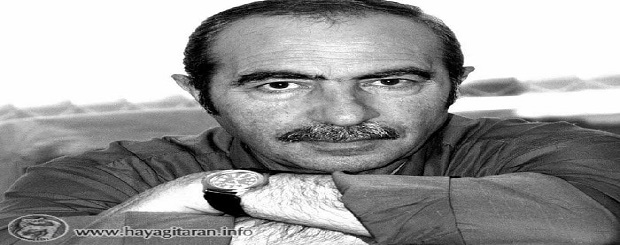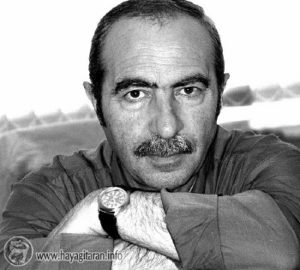
ԲԱՍԿԵՐՆ ՈՒ ՀԱՅԵՐԸ – BASQUES AND ARMENIANS – BASQUES AND ARMENIANS – VAHAN SARGSYAN
HISTORY PAGE – WITH HISTORY.
26.09.2014 – BASQUES AND ARMENIANS – ՎԱՀԱՆ ՍԱՐԳՍՅԱՆ – //Hayagitaran.am//

PART 1:
At the beginning of the twentieth century, a 119-page book entitled “ARMENI ARIANI” (EDIZIONI “HIM”, ROMA-1938 – XVII), published by a group of prominent European linguists, was published in Rome, where language writers Latin, Greek, Persian, Armenian and others By performing a scientific linguistic analysis, they unanimously tend to be the most original Armenian language of the list above. The authors argue convincingly that this is the Armenian example of the word that has been fused, transformed, and adapted into the languages of various peoples at stages of their origin and emergence.
Compared to other alphabets, the phonetic richness and self-sufficiency of the Armenian alphabet are highly valued, which also results from the flexibility and independence of the Armenian language vis-à-vis foreigners. He also mentions the great influence of the spiritual culture of the Armenians on the process of development of the writing of the neighboring peoples, in particular the creation of the alphabets of the Iberian peoples (Iver, Virk) and Aghvan, and not only;
There is ample evidence that Armenians are the ancestors of different nations and that the traces of Armenian are at the base of their languages.
This time, let’s try to make sure of this by familiarizing yourself with the Basque people and their historical tradition.
To help us make our trip more efficient, we chose a guide and a linguist, Vahan Gerasim Sargsyan (1954 – 2011). Until his untimely death, he was a lecturer at the Yerevan State University, president of the chair of Roman philology, doctorate in philosophy, associate professor, honorary member of the Royal Academy of Basque Languages. He left a large library during his short but productive life, throwing an everlasting bridge for generations to come and for future generations of Armenians, establishing a mutual friendship between the relations of our peoples, and we hope this will last …
This is what he said.
“At the foot of the Pyrenees, in the north of Spain and in the south of France, is the Basque Country.” The theory of the Armenian origin of the Basque Country is deeply rooted in their historical memory and is reflected in written sources.
In the sixteenth and seventeenth centuries, the founders of the Basque national historian Esteban de Garibai, Andrés de Possa and Baltasar de Echave considered Armenia as the ancestor of the Basque country and tried to prove it by the names of Basque and Armenian places. Andrés de Peso says directly that the Basques came from Armenia and claims that the Armenians founded the Spanish coastal town of Tarragona, Spain. The name Taragona is similar to the Armenian tart, whose old form was Taravna.
This theory is also confirmed by the Spanish historian Gaspar Escollano of the seventeenth century, who states in his book on the history of Valencia (1610) that after the biblical flood, the patriarch Tobel descended with his men on the east coast of Spain and they spoke Armenian. Gaspar Escollano describes in detail the places where, according to tradition, the remains of the first inhabitants of Spain, the Armenians, are buried. The churches are now in these places, mainly in modern Catalonia, which in turn testifies that these sites have long been considered sacred.
The second major breakthrough in Basque and Armenian ethnolinguistic theory was that of a young Basque linguist, Bernardo Estornes Lassan, who later became a renowned scholar and scholar, engaged in the Basque folklore collection of the Ropkalev region. .
Thus, in the village of Isaba near Estornes Lassan, near the eastern border of Navarre, wrote a local story that the village of Isaba was founded by Armenians, the first inhabitants of Navarre and ancestors of Basques. The story states that Basker’s ancestor was Haytor and that he came from Armenia with his 7 sons, in whose honor he had founded the first seven settlements in Navarre.
It is also said that the new Armenians, the Basque ancestors, knew the secrets of metalworking. As a result, a scroll was found in the village archives, a historical document confirming the oral history.
It should also be noted that the Basque language “Isaba” is translated as “Traces of ancestors”, and although this may seem rather unlikely, the fact remains that there is still a road in the village. Isaba called Ermina. The national tradition associates this name with the name of Armenia (Armenia) in honor of the first settlers of Navarre.
Read Peter Jensen’s book Hitler und Armenier, in German or in my translation, which you can find in bookstores, or read Armenian Studies in Armenia online at http://www.title.edu/.
At the end of the last century, the famous English scientist Edward Spencer Dodson made a fortuitous and very interesting discovery. As a well-known scientific bachelor, Dodson, as part of his own development, decides to study Armenian and adopts for this purpose the Ecological Special of Paris.
After only two months of research, he found that many Armenian words correspond to Basque. A manual of his hypotheses on this subject was published in 1884 in the Euskera magazine (Basque language) entitled “Basque words in Armenian”. The list of parallels encountered by Dodson in both languages contained more than 50 words, an important part of words that is generally considered the traditional and historical basis of any language. ”
Thus, thanks to extensive and specialized scientific studies, Vahan Sargsyan has made some very interesting and important conclusions. As Vahan Sargsyan says, the Basque people are the oldest people in the far west of Europe who have retained their Armenian identity.
There are about 600 words in Basque that have the same meaning in Armenian, the whole grammar system and, more importantly, place names and the tradition according to which they emigrated from Armenia.
But if the Basques emigrated from Armenia and brought with them the Armenian language and culture, this is another indisputable fact of being an indigenous of the Armenian Highlands. On the basis of this information, it can be assumed that the emigration of former Armenians to the Pyrenean Peninsula began at least 5,000 years ago.
Karine Mkrtchyan / Source: Akhtamar Online
ORIGINE SOURCES-hayagitaran.am/2014/09/id-4690.html
ENGLISH TRANSLATION “lousavor avedis”
